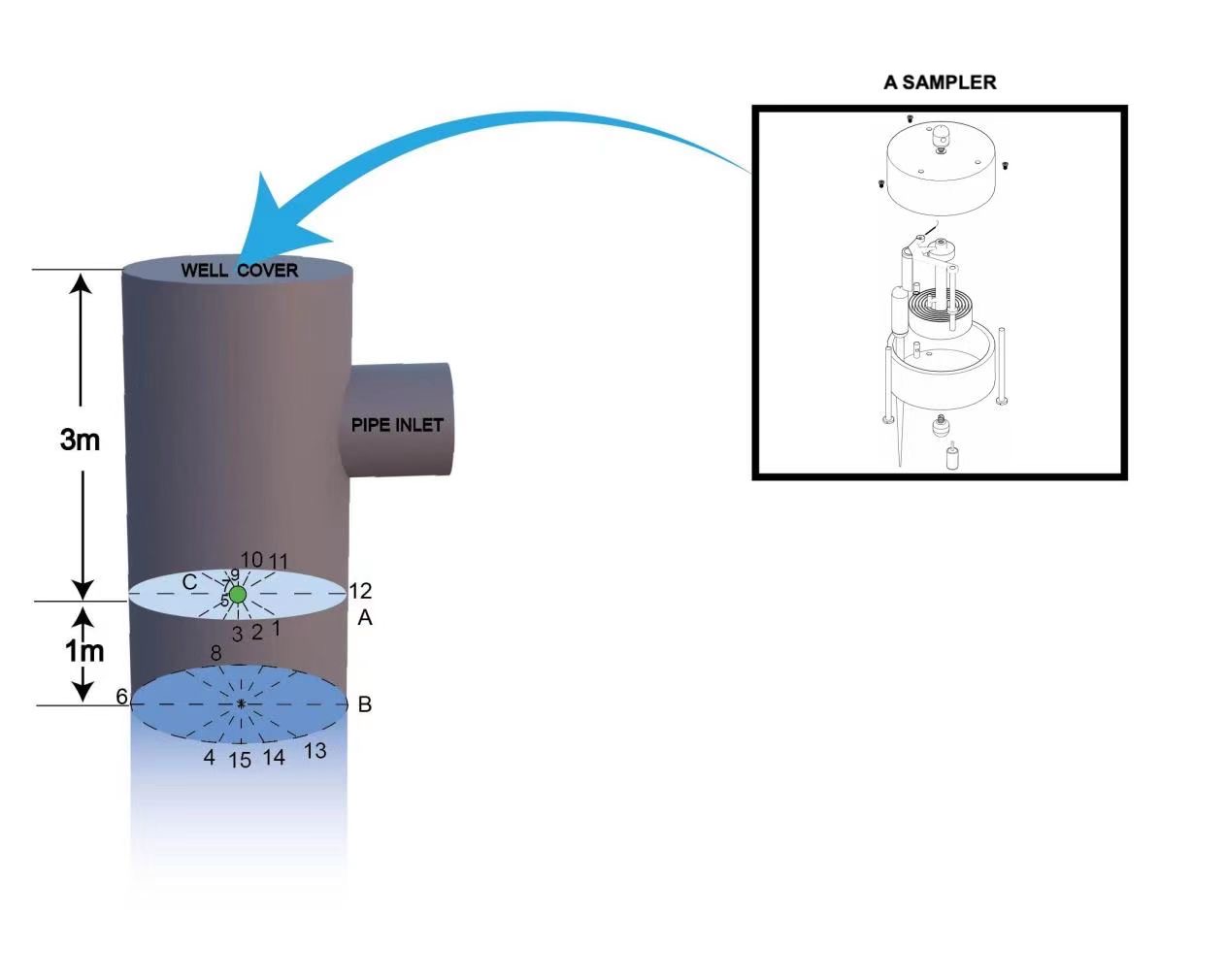
The over-use of chlorine-based disinfectants and antibiotics decreases the effectiveness of sewage treatment, causing dominance of Pseudomonas in hospital sewage treatment plants. This study investigated bacterial species, abundance, and distribution in anaerobic sludge under different spatial distributions (drainpipe wall-attached sludge and floating sludge samples) in a hospital sewage treatment plant to establish a rapid method for identifying bacteria, monitoring microorganisms, and evaluating sewage treatment capacity. On April 11, 2022, 15 sludge samples were obtained from multiple points in the plant using a modified sampling device. Microbial taxon distribution and sludge sample diversity were analyzed via high-throughput sequencing of the 16S rRNA gene V3–V4 region amplicon. α-diversity, β-diversity, and relative abundance at the phylum and genus levels were calculated using QIIME2 and R software. In total, 409,705 high-quality sequences were statistically identified in 67 phyla, 165 classes, 317 orders, 449 families, 644 genera, and 1132 species. SNK-q test revealed significant differences in the dominant phyla and genera between different locations. Increasing sampling depth resulted in improved sampling performance, increased diversity and evenness of the community, but decreased Pseudomonas detection rate.
Total file downloads: 27